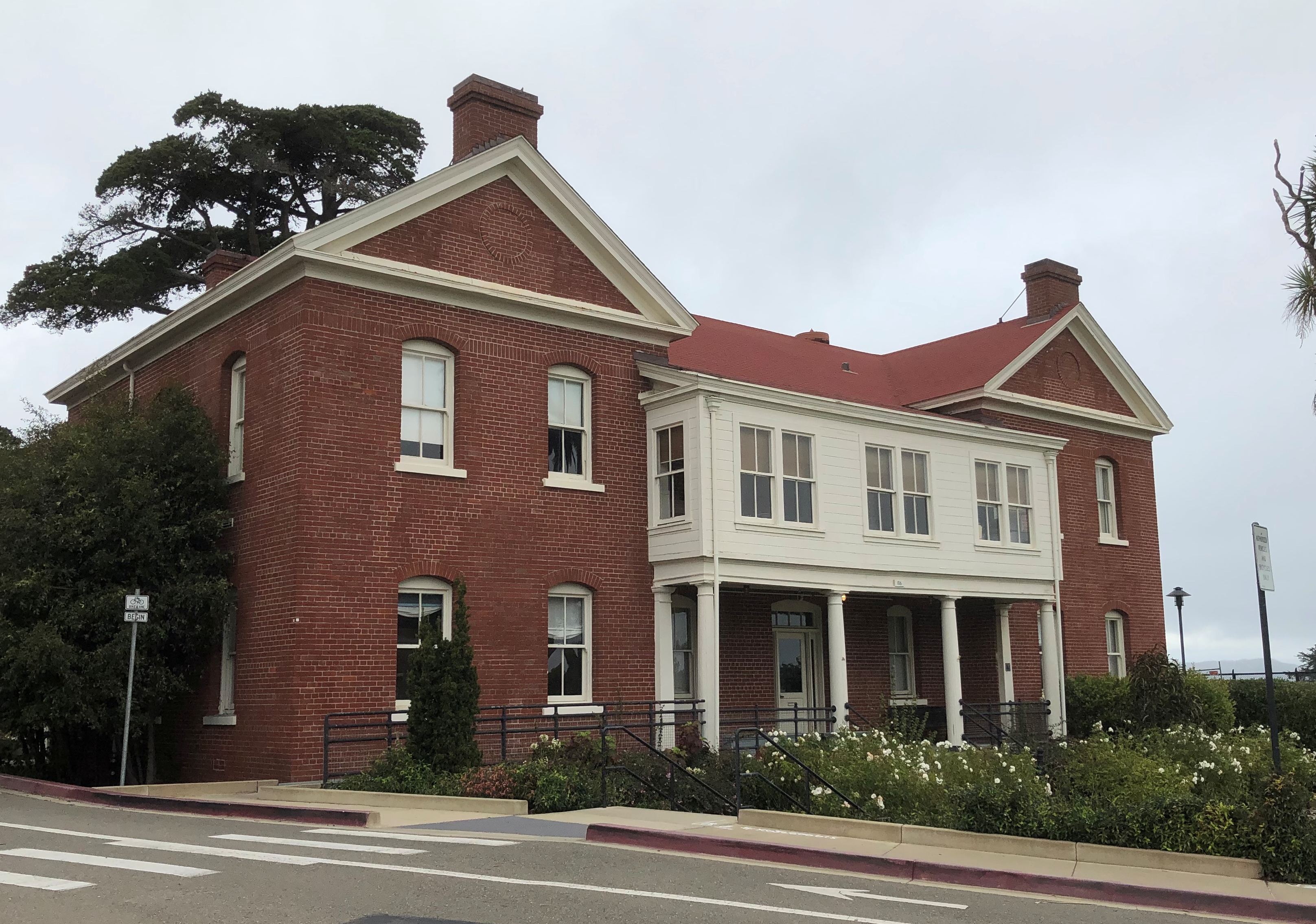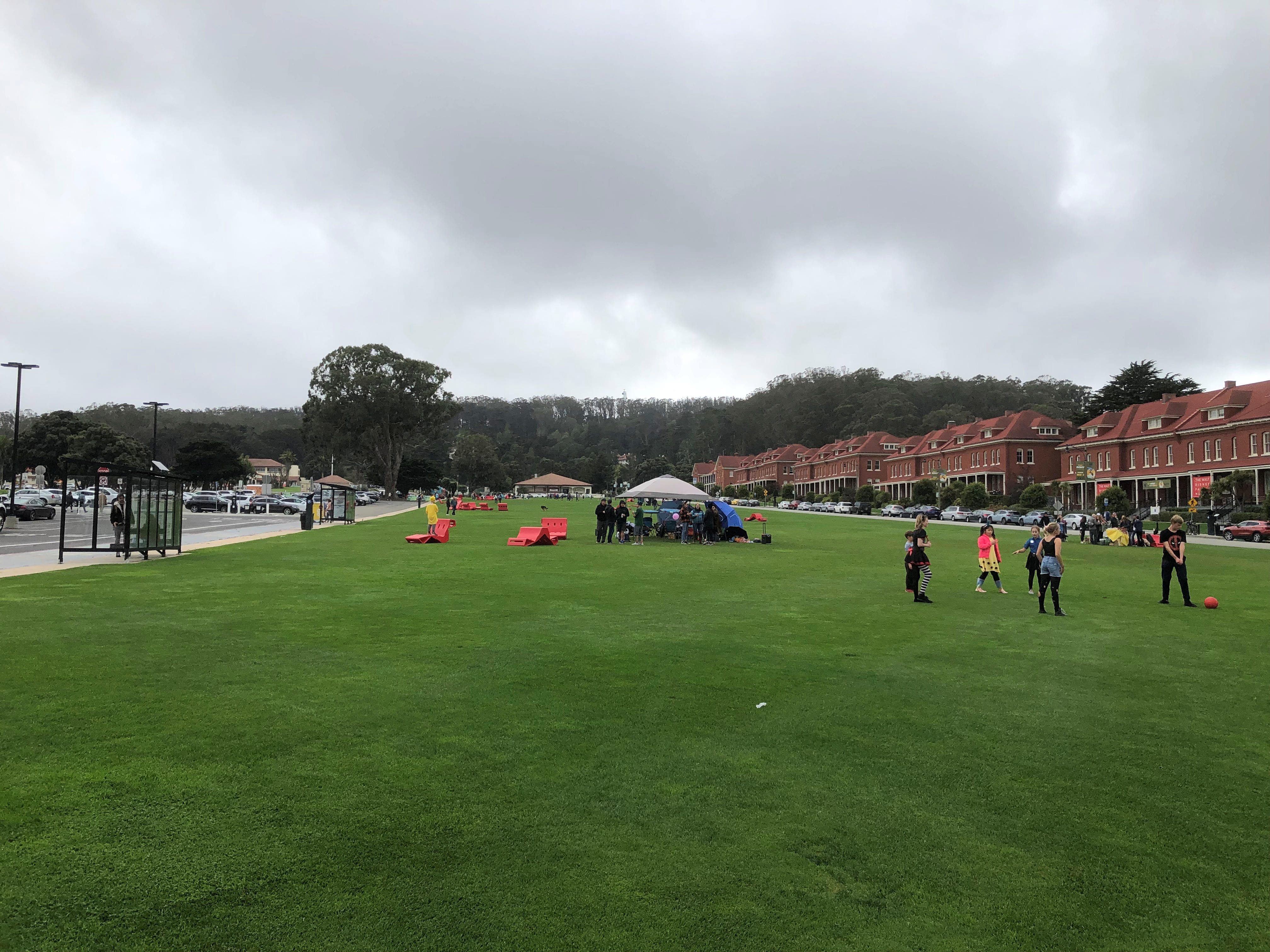From Crissy Field on San Francisco Bay, a convenient walking path leads to one of the formal entrances of the Presidio, on Girard Road, and some nearby green space.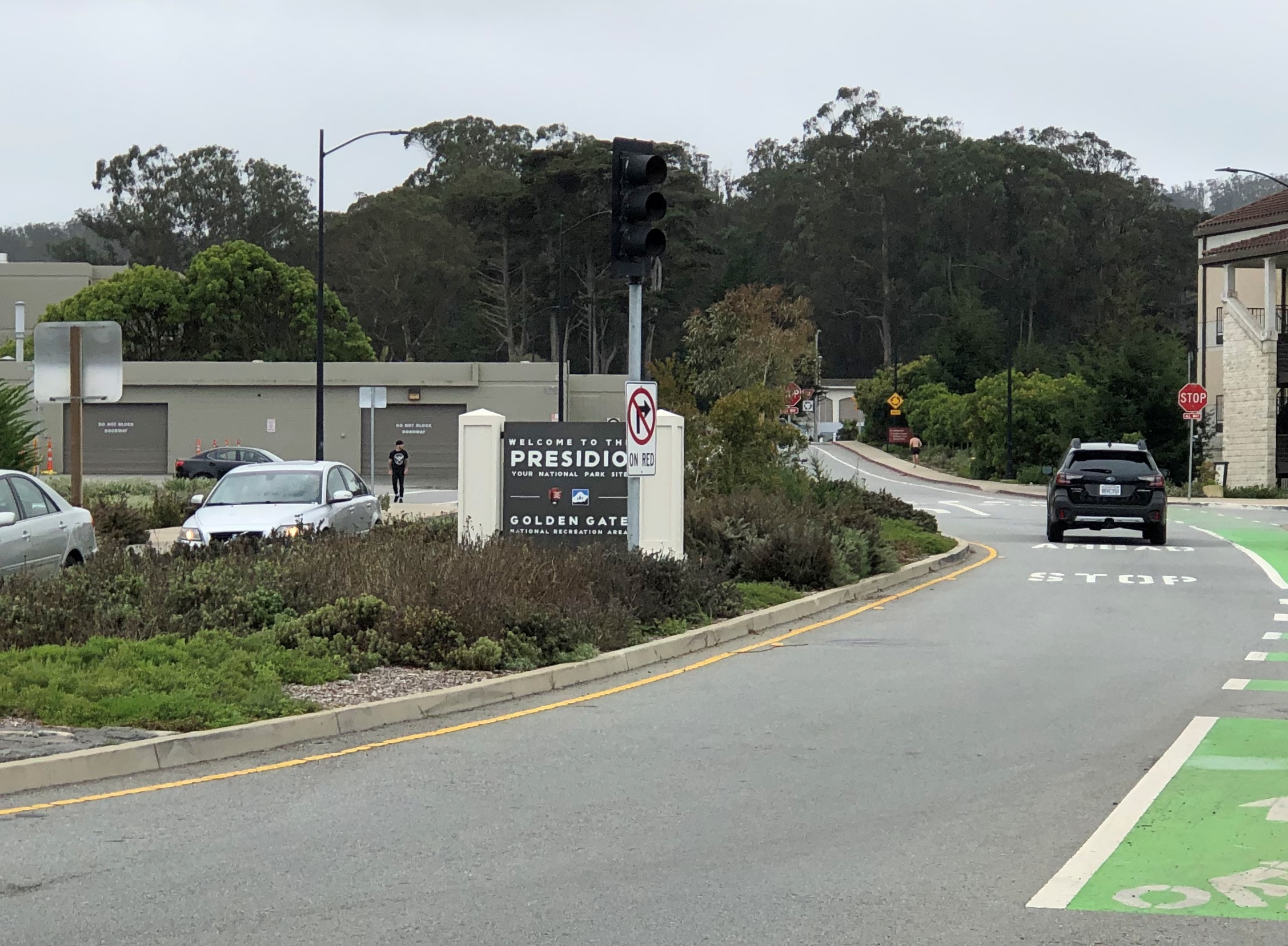

Actually Crissy Field is part of the 1,491-acre former fort, which is part of Golden Gate National Recreation Area and sprawls across the northwestern part of the San Francisco Peninsula. These days, the Presidio includes many former military structures, museums, restaurants, lodging, recreational spots, art installations, trails and lawns, but also residential and commercial properties, including Lucasfilms headquarters.
Too much to see, even in a series of days. Still, I saw a fine slice. I spent most of the afternoon of October 30 at the Presidio, taking a look at some of the large stock of former military properties.
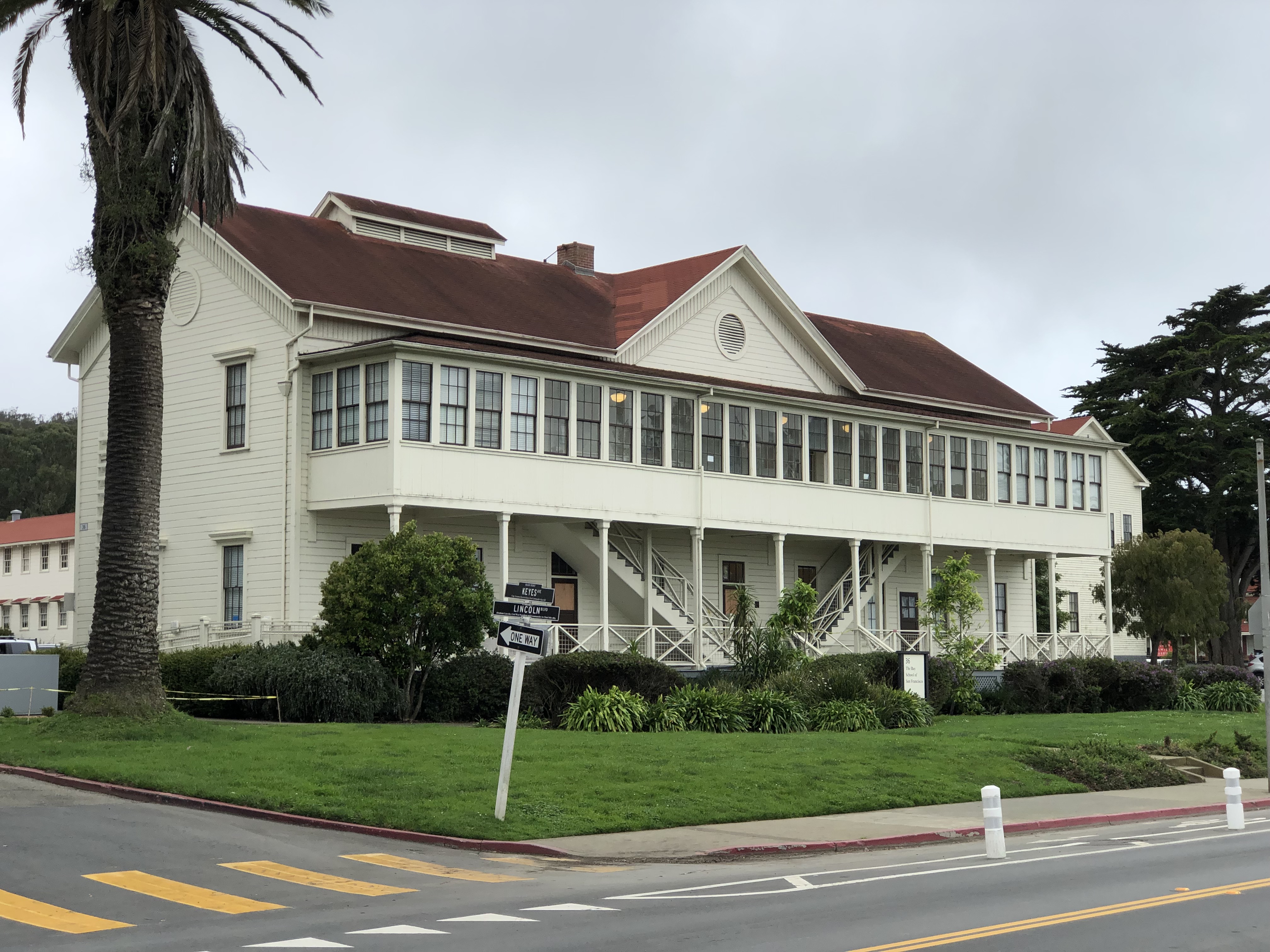

I didn’t know that band members ever had their own barracks, but apparently they did at the Presidio. The building could accommodate 37 musical soldiers.
“The Presidio of San Francisco represents one of the finest collections of military architecture in the country and reflects over 200 years of development under three different nations,” says the NPS.
“Today, the Presidio boasts more than 790 buildings, of which 473 are historic and contribute to the Presidio’s status as a National Historic Landmark District. The building types range from elegant officers’ quarters and barracks to large, industrial warehouses, administrative headquarters, air hangars, major medical facilities, and stables.”
Who says the military isn’t concerned with aesthetics in its buildings? Was concerned, anyway.
I had some excellent Korean food from the Bobcha food truck. It seemed like a better bet than Viva Vegan, at least to my tastes. Had a nice view while eating, too. I was at the next table down.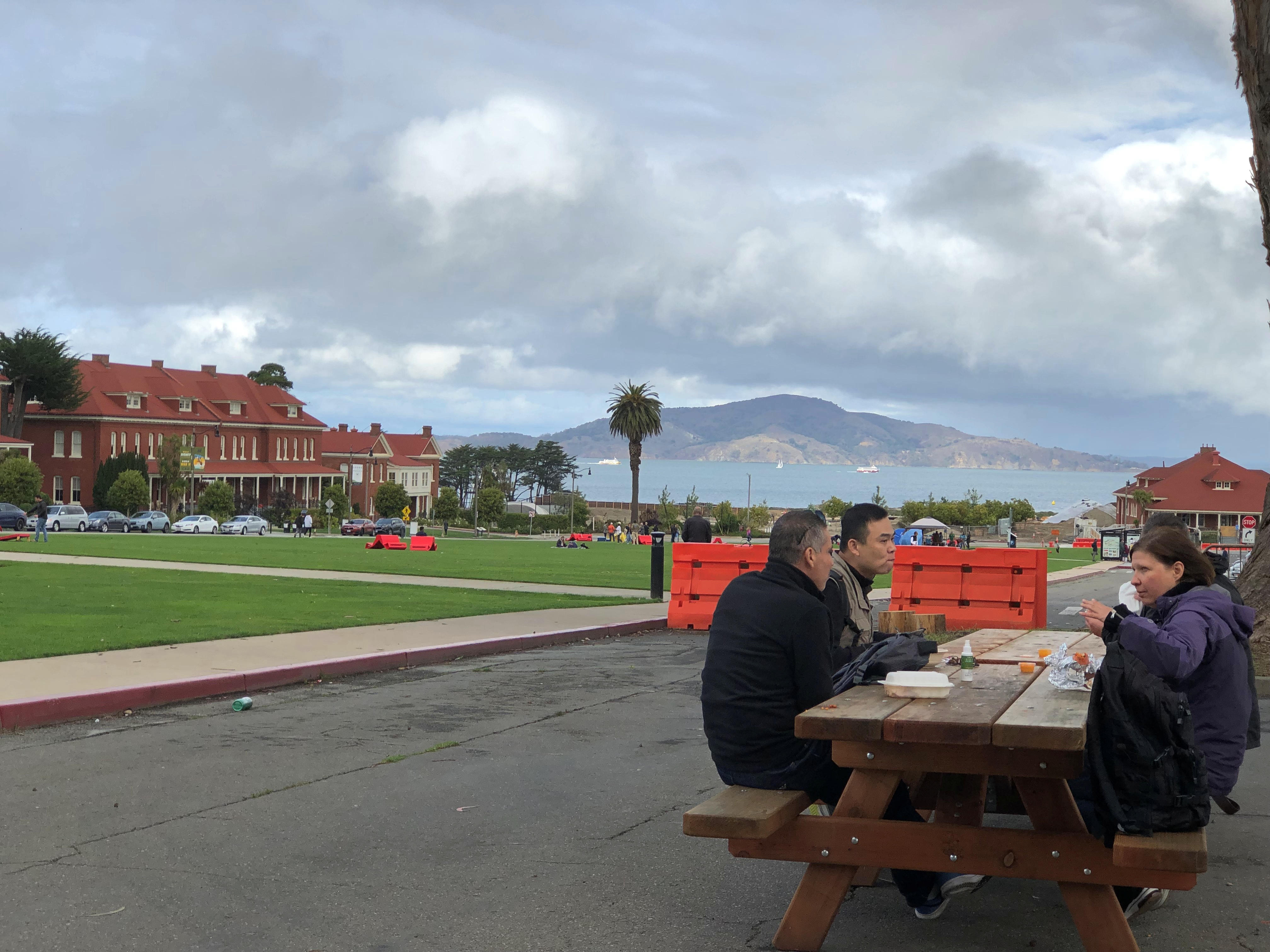
Not far from the parade ground is San Francisco National Cemetery.
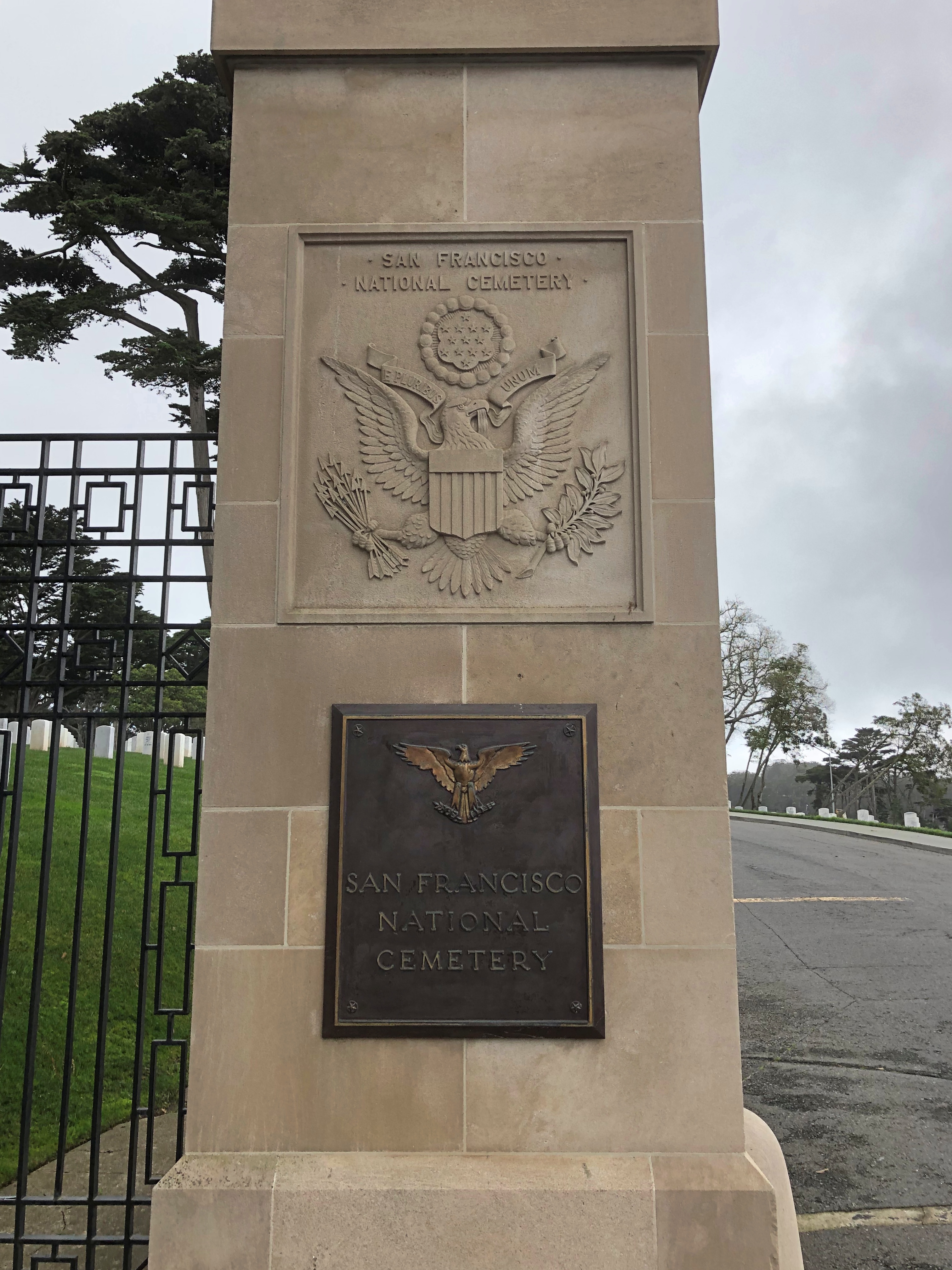
A picturesque hillside cemetery with towering trees.
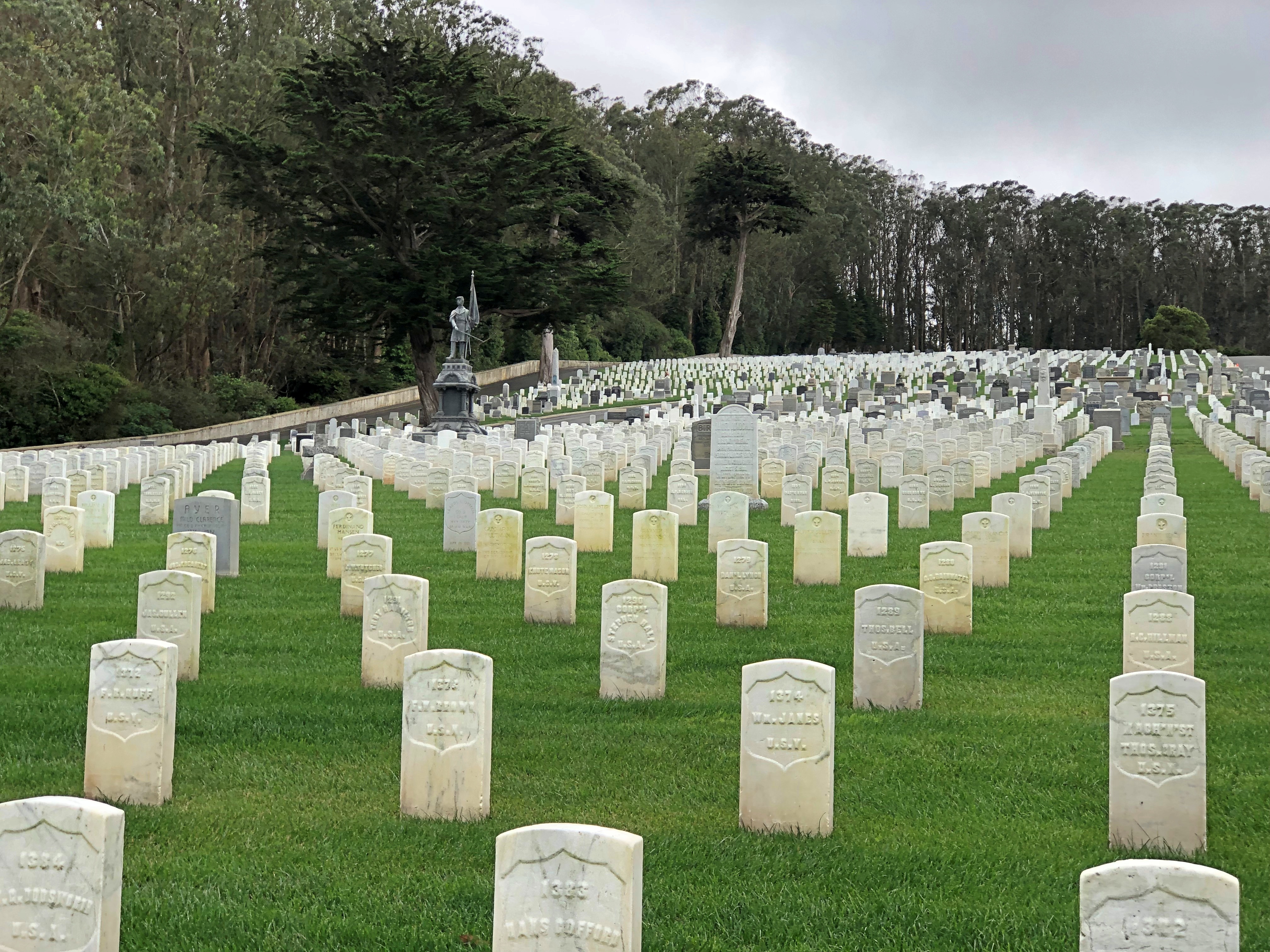

At about 28 acres, there are more than 30,000 service members interred there. It was the first national cemetery on the West Coast.
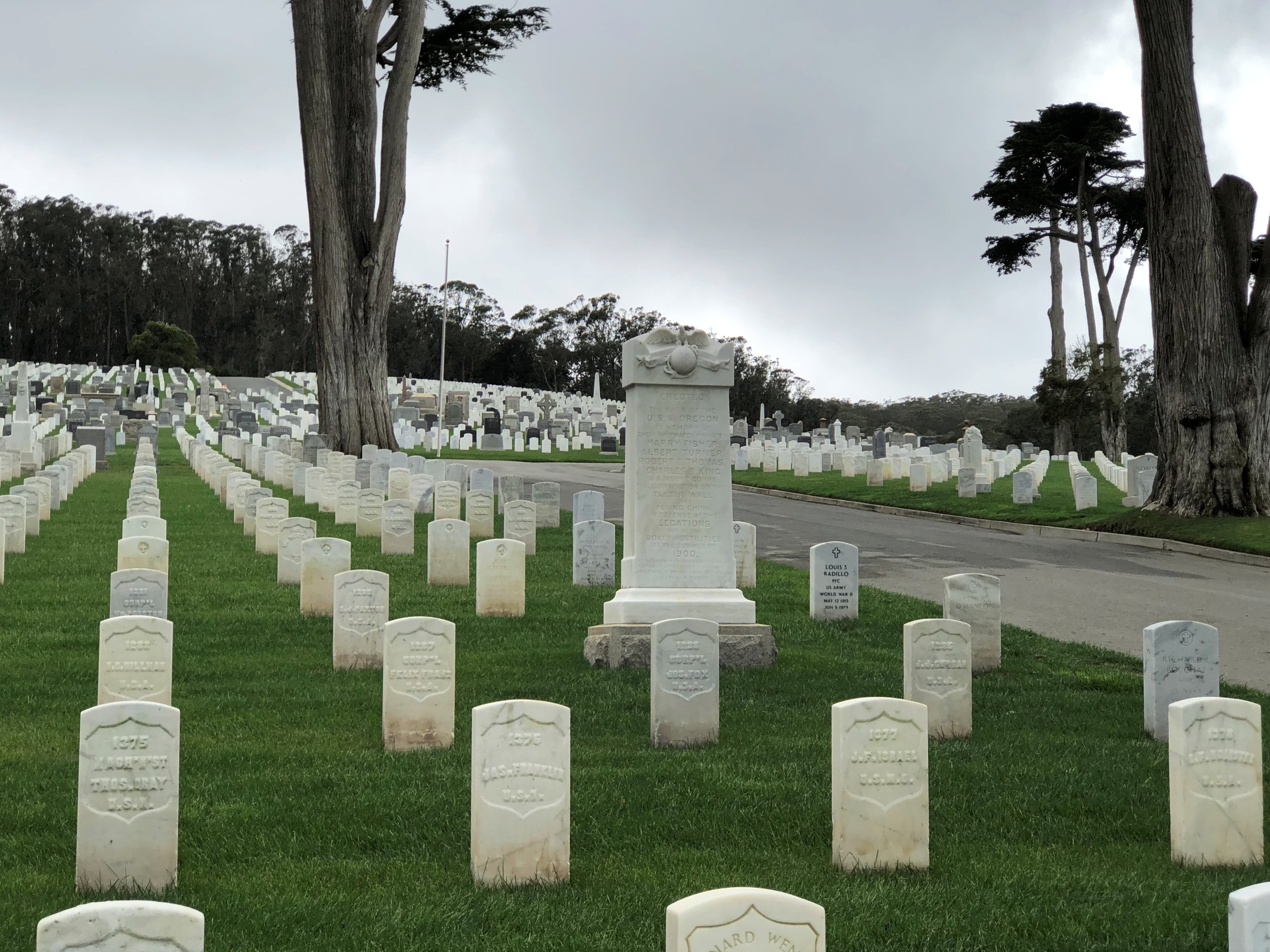
A memorial to an incident that doesn’t have that many memorials: the Boxer Rebellion.

In this case, memorializing four marines from the USS Oregon who died on the Tartar Wall defending the Legations in the summer of 1900.
As I sometimes do, I picked out an ordinary soldier to look up later.

Motor Machinist Mate First Class (MOMMI) Clayton Lloyd Landon of St. Louis, a submariner who went down with the USS Tullibee in 1944. It seems that the vessel was a victim of one of its own torpedoes, as happened sometimes.
Gunner’s Mate C.W. Kuykendall, on watch up top at the time, was the only survivor of the Tullibee sinking, having been knocked into the water by the explosion and later picked up by a Japanese ship, to spend the rest of the war as a POW. Remarkably, he tells his story in a recent video.
“I just feel like I’m lucky.” Well put.
